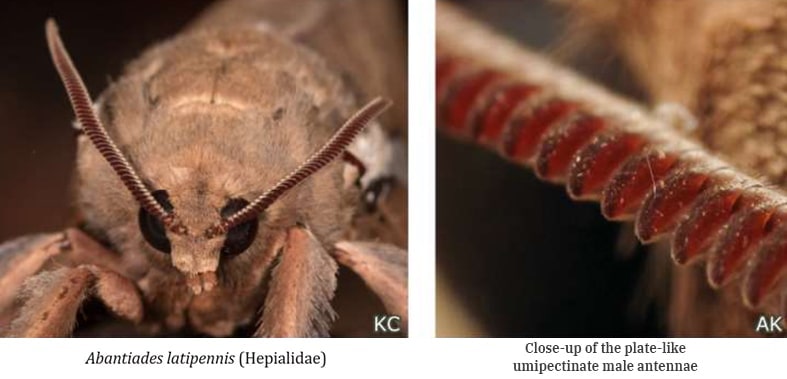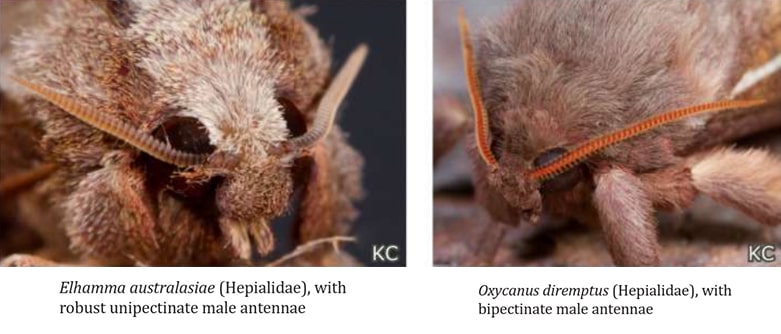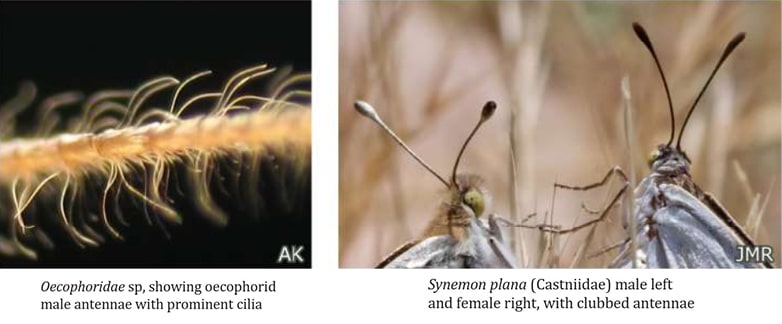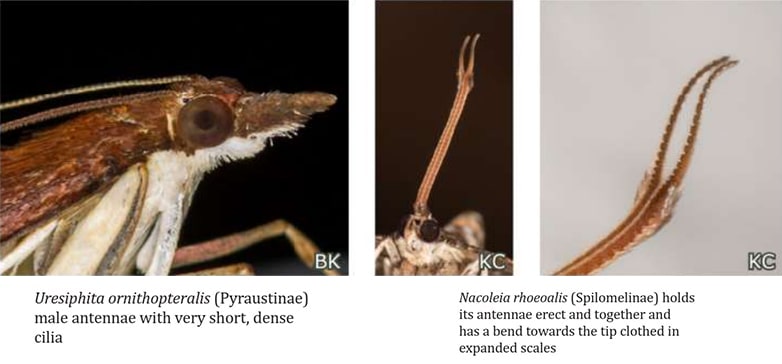Antennae




Moth antennae are made up of many scaled sensory segments. Simple linear antennae gradually decrease in diameter from base to tip, and the segments are plain. Most female antennae and some male are of this form. However most male antennae, and some female, have sclerotised branches on their segments known as the “rami” of a “pectinate” antenna. Such antennae are also referred to as “comblike” or “feathery”. There can be one, two, three or four branches per segment. These antennal structures are regularly referred to in the species profiles in this book, for example males of many species are said to have “bipectinate” or “branched” antennae. Sometimes the antennal segments take the form of flattened plates or other shapes. Rarely, there is a “club” at the tip of the antenna.
The antennae, be they linear or branched, carry sensory hairs, also known as cilia, which can be tiny to quite long and have varying densities.
The reason for the antennal differences between the sexes is that female moths typically attract mates by emitting pheromone vapours that are sensed by the males’ complex antennal structures with their greater surface area. The smaller branches and cilia of female antennae are used to detect foodplants. The photos below illustrate some different types of antennae from both sexes.
